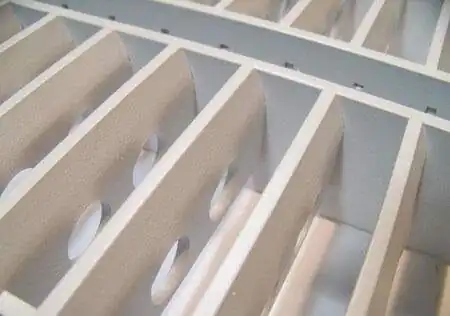The Benefits of High Flow Directional Tile Grates in Data Centers9 min read

On average, 60% of valuable conditioned air is not reaching the air intake of IT equipment, resulting in bypass airflow. And as we’ve discussed in our recent blog post, we know that bypass airflow is not as simple as you may think to reduce. While airflow management improvements create the opportunity to reduce bypass airflow, it is resultant on changing the volume of conditioned air supplied by cooling units to achieve the full benefits.
Now, when we say “airflow management improvements”, we commonly think of initiatives such as grommets, blanking panels, and containment. We less commonly think of perforated tiles, or high flow directional tile grates as a part of this mix. However, perforated tile placement, and high flow directional tile grates, which is the focus of this article, can provide additional opportunities to reduce bypass airflow as well as other improvements. Due to the increasing popularity of the use of directional high flow supply grates in recent years, it is important to understand some of their airflow characteristics and where and how they are beneficial.
Where they’re Beneficial
Directional high flow grates are useful mainly in room configurations where there is either no containment or only partial containment deployed. In either hot or cold aisle full containment configurations, directional tile grates are not necessary. This however assumes that in the full containment configuration the best practice for rack airflow management of blanking panel use has been employed. If in a full containment configuration there are no blanking panels then there may be intake air temperature problems that directional grates will solve, but these problems could likely be solved by the much less expensive implementation of blanking panels.
How they’re Beneficial
Whether in a fully open hot aisle – cold aisle arrangement of server cabinets or in situations of partial containment, directional tile grates offer value in both effectiveness and efficiency. If there is an excess of conditioned air supplied, then directional grates will likely resolve intake air temperature problems. They are able to do this by directing the flow from the tile at the face of the equipment in the cabinet, thus greatly mitigating normally expected bypass airflow straight past the cabinet. This potentially creates a condition allowing for reduced fan energy from cooling units and improved efficiency resulting from higher return temperatures. If there however is an insufficient flow rate of conditioned air from a grate (that is the flow rate from the tile is less than the sum of the flow rates of IT equipment served by the grate) then a directional grate will not solve the intake air temperature problems in the cabinet.
In addition, where there is not an abundance of excess cooling capacity, directional tile grates should also help reduce hot spots. Cautionary notes would apply to situations where there was some significant load variation between different pairs of aisles wherein bypass would still be possible in the lower density areas. Even if the flow direction is concentrated on the servers, research indicates there is a significant pathway for bypass airflow directly through the servers at certain pressure levels, which might be achieved in lower density rows adjacent to higher density rows. However, such a potential for this type of bypass in no way is a show-stopper for these directional tile grates; it merely suggests there would be some value to maintaining at least some relatively evenly distributed load around the data center.
Conclusion
With an average of 60% of conditioned air not reaching the air intake of IT equipment, there is a large opportunity for improvements such as improved IT intake air temperatures and IT equipment reliability, reduced bypass airflow, and reduced operating expense to name a few. These improvements can be achieved by implementing airflow management initiatives, thus creating the opportunity to change the volume of conditioned air supplied by cooling units by lowering set points. While high flow directional tile grates may not be at the top of your list when it comes to airflow management improvements, they can provide significant benefits to optimize your data center cooling.
Here you can create the content that will be used within the module.

Airflow Management Awareness Month
Free Informative webinars every Tuesday in June.
0 Comments